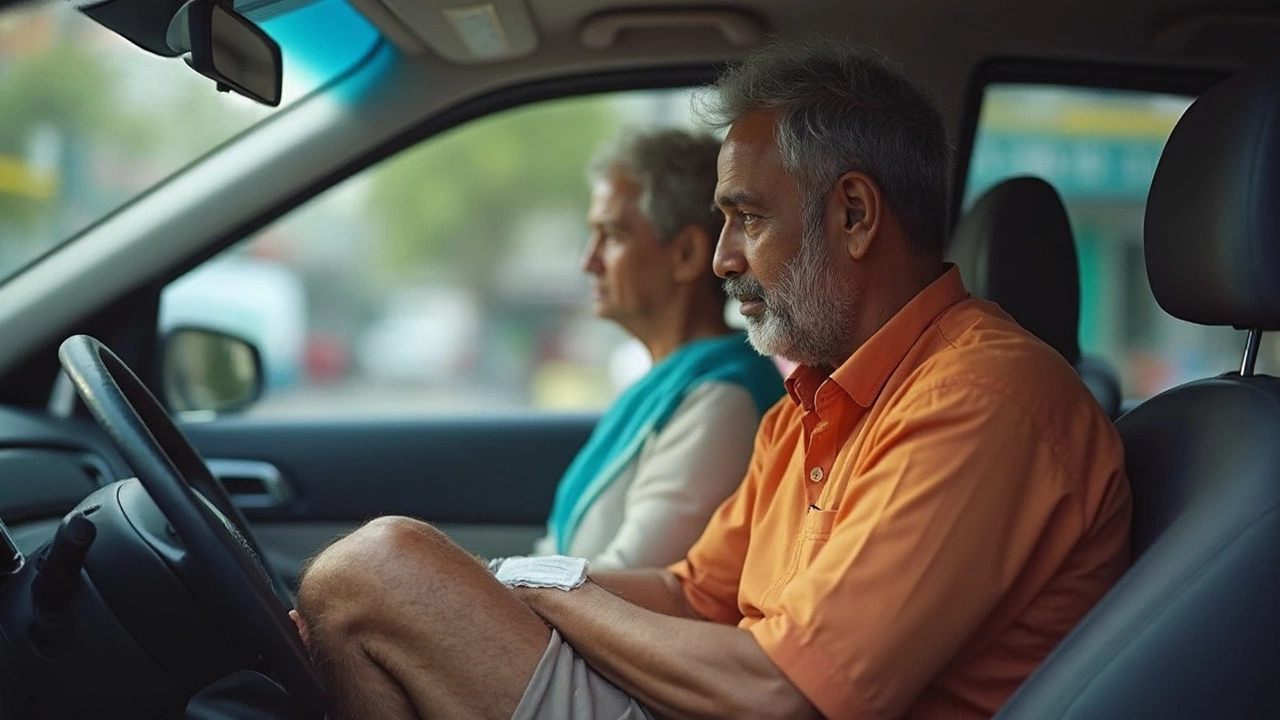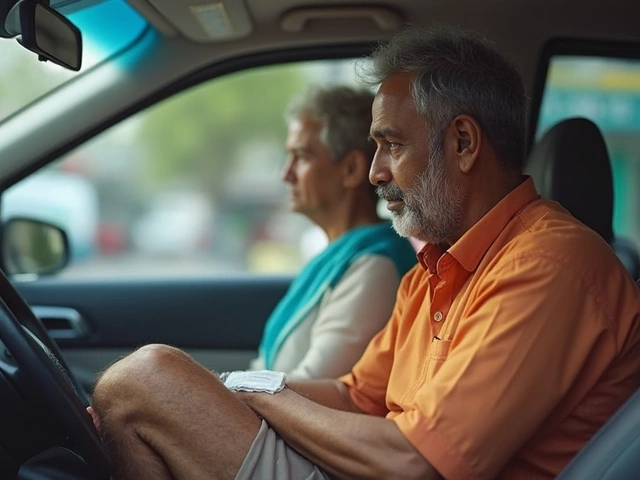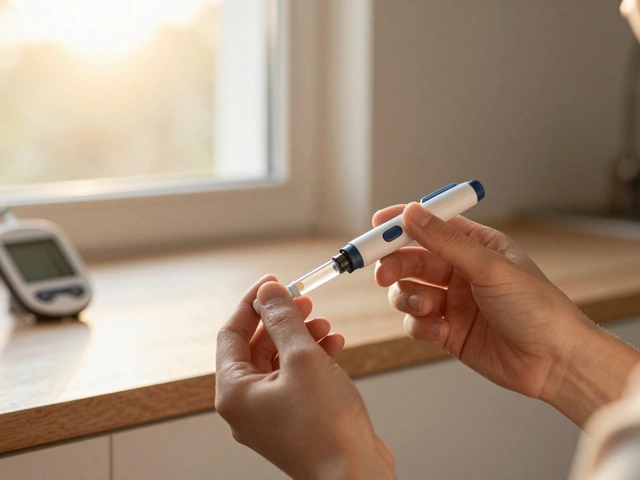- Home
- Health And Wellness
- Driving After Knee Surgery: How Soon Is Safe?

Driving After Knee Surgery: How Soon Is Safe?
You’d think knee surgery would be a basic fix and you’d be back in the driver’s seat in no time. But here’s a stat that might surprise you: Only 30% of people are able to return to driving within two weeks after knee surgery, according to a study in the American Journal of Sports Medicine. Not what you wanted to hear if you hate asking for a ride as much as I do. It’s not just your knee you have to think about; it’s how fast you can actually hit that brake if Bruno decides to jump in front of the car again. Feeling ready doesn’t always mean you’re ready by medical standards.
The Real Impact of Knee Surgery on Driving Ability
If you’re thinking about getting back behind the wheel two weeks after surgery, you have to ask yourself: can your knee handle it? After a typical arthroscopy, the knee is still swollen, stiff, and—let’s be honest—unpredictable. Even a partial meniscectomy, which is a pretty minor knee op these days, still throws your reaction time way off for at least a week or two. If it’s a bigger surgery like a total knee replacement, most folks are looking at four to six weeks minimum.
Doctors usually say you need to be off opioid painkillers completely, because those slow your brain down. In fact, a University of Iowa study showed drivers on oxycodone after surgery had double the usual braking time. And it doesn’t matter if you drive an automatic or stick—braking is still king. Pain, swelling, and limited movement all mean your foot might not reach that fake “emergency stop” as quickly as you think in the driver’s seat.
But here’s the deal: Not all knees rebound alike. Data from the Yale School of Medicine found folks with surgery on their left knee (and driving automatics) could return to driving faster—usually a week or two earlier than right-knee patients, just because the right foot handles the pedals. And it’s not only the knee—being able to twist and check blind spots without wincing counts, too.
There’s an old-school “slam the brake pedal” test most orthopedic surgeons use. If you can stop the car hard in a simulator or during a safe, empty parking lot drive and your knee doesn’t rebel, you’re technically getting there. Still, even then, insurance and local driving laws can throw a wrench in your plans. Your insurer might consider you “unfit” and not cover an accident if you get behind the wheel before your doctor gives the green light.
Why Two Weeks Is (Usually) Too Soon
If you’re itching to get your freedom back, I completely get it. Walking Bruno isn’t exactly easy without a vehicle, and relying on friends or Uber can turn you into a hermit. But science (and a ton of doctor advice) says two weeks is often wishful thinking. That swelling you see isn’t just on the surface; even after minor arthroscopy, internal tissues are still healing. According to a Mayo Clinic research group, the average time to return to safe braking speeds after right knee meniscus surgery is around 22 days.
Now here’s a caveat: Much depends on what was done to your knee. Simple removal of a loose body and no work on your ligaments? You might be one of the lucky few hitting the road in that two-week window. But if your surgery included any kind of major repair—ligament stitching, microfracture work, or full knee replacement—there’s a solid chance you’re still freshly limping when trying to push the pedal.
The pain doesn’t just make driving uncomfortable—it can cloud your thinking and slow your reaction. Guess what else sticks around for a while? That groggy, thick-headed feeling from trauma and anesthesia. The combination can lead to slow reaction times and poor judgment, which is a recipe for trouble behind the wheel.
On top of that, your doctor might have given you a big, chunky knee brace. You might think, "Hey, I’ll tough it out!" but research in the British Journal of Sports Medicine says wearing a bulky brace or even a postop bandage cuts your ability to slam the brake by almost 25%. Think about that the next time you’re tempted to sneak out for groceries. Insurance companies and traffic laws in most states actually say your "functional recovery"—meaning pain-free, normal motion—has to come before you return to solo driving. Your doctor should sign off on it. If something goes wrong, you could be on the hook, not just for the fender-bender, but all the costs.
| Time After Surgery | Average Brake Reaction Time (seconds) | Percentage of Patients Safe to Drive |
|---|---|---|
| 1 week | 0.90 | 5% |
| 2 weeks | 0.72 | 30% |
| 3 weeks | 0.64 | 70% |
| 4 weeks | 0.56 | 88% |

Warning Signs That You’re Not Ready
You might be tired of playing passenger, but let’s be brutally honest. The fastest way to know you’re not ready? If you’re still limping, struggling with stairs, or using your hands to help move your leg, the pedals aren’t your friends yet.
Get real about your pain meds. Even over-the-counter stuff like codeine or tramadol can cloud decision-making. Check your actual range of motion—if you can’t bend your knee a solid 70-80 degrees and don’t have full control, especially if it was your right knee, you’re not just pushing your luck, you’re risking it. An easy home test: Sit in your car (engine off), put your foot on the brake, and press the pedal repeatedly. If you wince, hesitate, or flare up, you’re not ready.
Reaction time is a big deal. If you want to check safely, put a stopwatch app on your phone, have someone say “Brake!” and you press the pedal as fast as you can. According to a recent University of Maryland study, safe average reaction time for most people is about 0.7 seconds. Post-knee surgery, most folks are around 0.9-1.1 seconds at the two-week mark, so you’re slower than the pre-op you.
Muscle weakness is another sneaky villain. Even if pain seems okay, if your thigh and calf feel "jelly-like," or you notice any shaking when you press the pedals, take it as a hard no. Physical therapists say regaining full strength could take several weeks—sometimes up to two months for major surgeries.
- You need to be able to move your foot quickly and with full control from the gas to the brake and back.
- You shouldn’t have any numbness or pins-and-needles in your knee, foot, or toes.
- Doctors recommend at least 90 degrees of knee flexion for most pedal movements.
- Your surgeon’s written sign-off or a “fit to drive” note is not just a suggestion; some states require it for post-surgery drivers.
If in doubt, check the fine print in your insurance policy—and don’t be shocked if you’re not covered without official clearance.
How to Get Back in the Driver’s Seat Safely
The easiest way to speed your return to driving? Nail your rehab. Physical therapy isn’t a punishment; it’s the key to getting behind the wheel again—comfortably and legally. Go to all the sessions. Do the home exercises. Don’t skip the ice and elevation drill, even if it feels boring. I bribe myself with a treat for Bruno once I finish my exercises, which somehow works every time.
Start stretching for pedal movement as soon as your doctor says it’s safe. You can practice moving your foot quickly from accelerator to brake while sitting in a chair. As soon as your swelling is down and you can flex your knee to 90 degrees without pain, try sitting in your parked car and doing “dry runs.” No pressure to actually drive, but go through the motions.
You should wait at least 24 hours after your last opioid dose (Vicodin, Tramadol, Percocet, etc.) before even considering driving. When you feel ready, ask your doctor to do a "brake test" during your follow-up visit. Some physical therapy centers even have reaction-time simulators so you can check your readiness in a zero-risk setting.
- Plan your first drives on quiet streets or early mornings to avoid traffic.
- Keep trips short—just to the coffee shop or pet store, for instance—to rebuild confidence.
- If you feel stiffness, sharp pain, or slow reactions, park it and call a friend to pick you up.
- Always keep your surgeon’s sign-off handy, especially if your car insurance or state DMV asks for proof you’re good to go.
Don’t forget those little hacks—slide your seat back or down to give your knee more space, check your mirrors for the best angles to avoid twisting, and maybe even “test drive” with a family member or friend riding shotgun the first few times.
And don’t let guilt get to you. You’re not being dramatic if you take a bit longer. I see folks muscle through pain for pride’s sake, and it’s just not worth risking a crash—or your new knee. Remember, your independence is coming. As soon as you can comfortably brake, react fast, and tackle the pedals like your old self, you’ll be out there honking at slowpokes again. Bruno and I can’t wait for that first road trip when my knee’s ready to roll.

Arnav Singh
I am a health expert with a focus on medicine-related topics in India. My work involves researching and writing articles that aim to inform and educate readers about health and wellness practices. I enjoy exploring the intersections of traditional and modern medicine and how they impact healthcare in the Indian context. Writing for various health magazines and platforms allows me to share my insights with a wider audience.
About
Medical Resource Center India is a comprehensive online platform dedicated to providing reliable health information and medical resources in India. Explore a wide range of articles, tips, and advice on medicine, healthcare services, and wellness. Stay informed about the latest developments in Indian medicine and access valuable insights into maintaining a healthy lifestyle. Discover expert guidance and health solutions tailored for every Indian citizen. Your go-to destination for authoritative medical knowledge in India.



